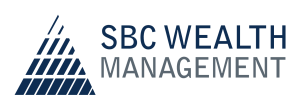Have you thought about selling your home recently? Or perhaps selling your vacation home or rental home to capitalize on this buying frenzy?
Real estate, specifically the purchase and sale of homes, has been a hot topic in recent years. Home prices have increased exponentially creating huge opportunities for sellers. But have you thought about the tax consequences of that sale? Or what options you may have to defer taxes or possibly avoid taxes altogether?
Your tax liability depends on the purpose of the home and how long you have held the property. When you sell a home or property for more than you paid for it, you may owe capital gains tax. If you held the home for more than a year, you could owe long-term capital gains tax on the difference between the purchase price and selling price. Long-term capital gains tax rates are either 0%, 15% or 20%, depending upon your income. If you sold the home less than a year after purchasing, you could be subject to short-term capital gains tax. Short term capital gains are taxed at ordinary income tax rates, which could be much more than long-term cap gains rates depending on your income and profit from the sale.
However, there are some exceptions and exclusions to consider before you prepare to pay your dreaded tax bill…
- Primary Residence Exclusion
If you are selling your primary residence, the IRS allows you an exclusion for capital gains tax called the “Primary Residence Exclusion.” You may exclude up to $250k of profits if single, or $500k if married filing jointly. To qualify, you must have lived in the home for at least two out of the previous five years.
Note: The IRS says you’re not eligible for the exclusion if you excluded the gain from the sale of another home during the two-year period prior to the sale. There are some exceptions to this rule, and you may still qualify or partially qualify if you had a change in employment, change in your health, or experienced other unforeseen circumstances.
*A common strategy for rental home owners is to use the property as their primary residence for at least 2 years so they can qualify for this exclusion.
- 1031 Exchange
A 1031 exchange, also known as “like kind exchange,” allows you to defer taxes by selling your property and then buying a similar property. To do this correctly, the properties must be “like-kind” and you should use a qualified intermediary (in other words, do not take control of the cash before the exchange is complete or the entire transaction could be disqualified.) You must report this to the IRS on Form 8824.
- Opportunity Zone Funds
Opportunity zones were created under the Tax Cuts and Jobs Act of 2017. The idea was to spur economic growth in low income communities and offer a tax benefit to those investing in these areas. Within 180 days of the sale, an individual may roll their gains into an opportunity zone fund, and defer the taxes until 12/31/2026. If you hold the investment for more than 10 years, any appreciation earned on the opportunity zone fund will be tax free. For investments made before 12/31/2021, an investor can get a 10% step up in basis for holding the fund at least five years.
- Donor Advised Funds
If you are making substantial donations to charity, it could make sense to donate the property to a Donor Advised Fund and receive a deduction up to its fair market value. The limit for non-cash assets held more than a year is 30% of your AGI, but there is a carryover for five years if the deduction exceeds these limits.
All of that being said, please remember to not let the tax tail wag the dog. Taxes should be considered, but not at the expense of all else. Speak with both your financial advisor and accountant to weigh your options and determine the best strategy for your personal situation.
Sources and Articles:
- https://www.irs.gov/taxtopics/tc701
- https://turbotax.intuit.com/tax-tips/home-ownership/tax-aspects-of-home-ownership-selling-a-home/L6tbMe3Dy
- https://www.irs.gov/pub/irs-news/fs-08-18.pdf
- https://www.irs.gov/credits-deductions/businesses/opportunity-zones
- https://www.cnbc.com/2021/10/27/opportunity-zone-funds-are-more-hype-than-substance-for-tax-planning.html
- https://www.bkd.com/article/2021/10/should-i-consider-opportunity-zone-fund










